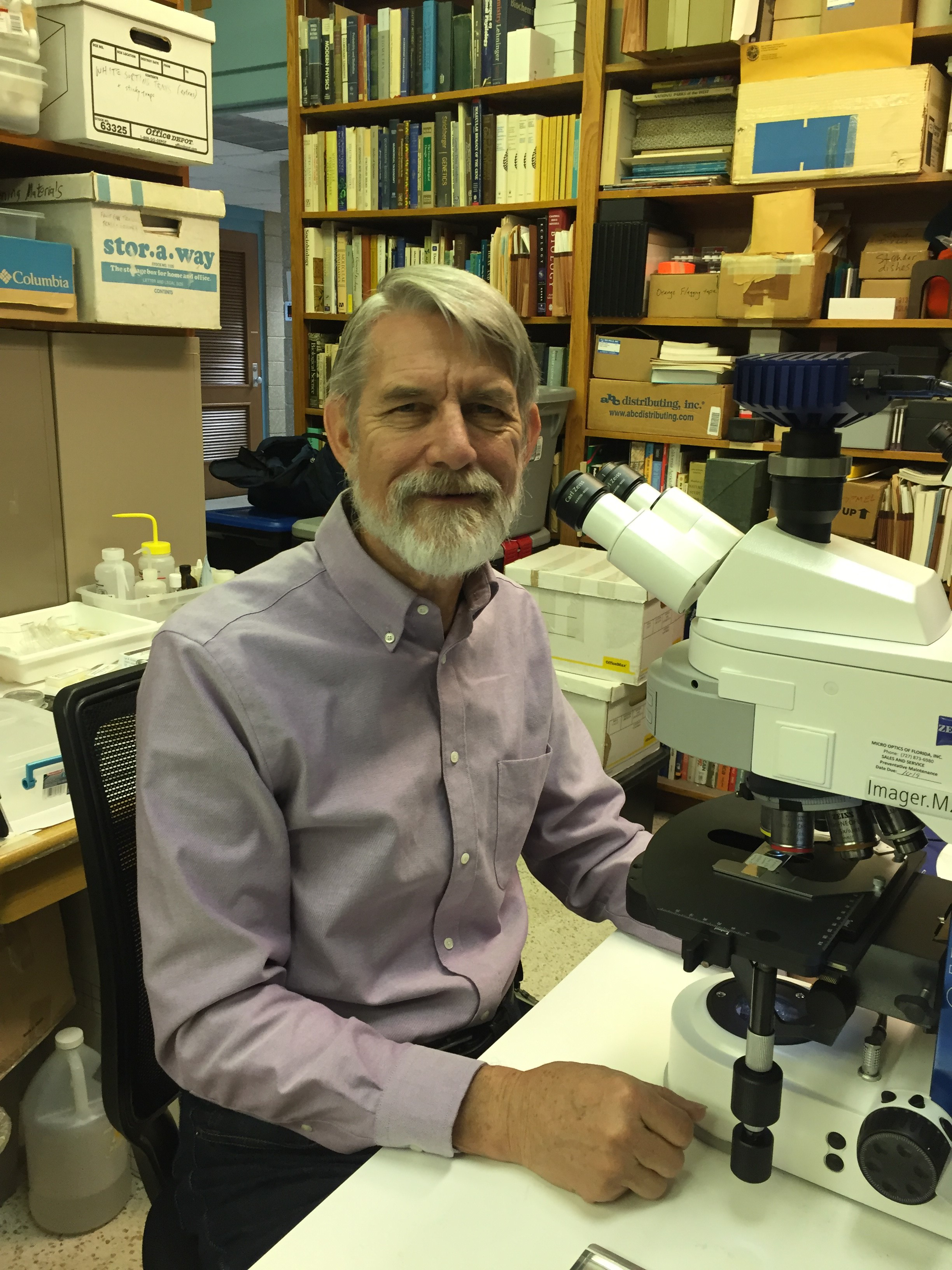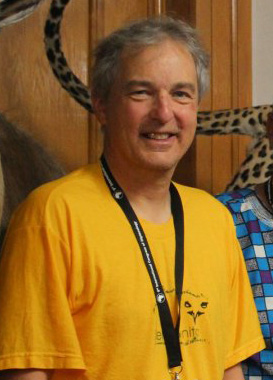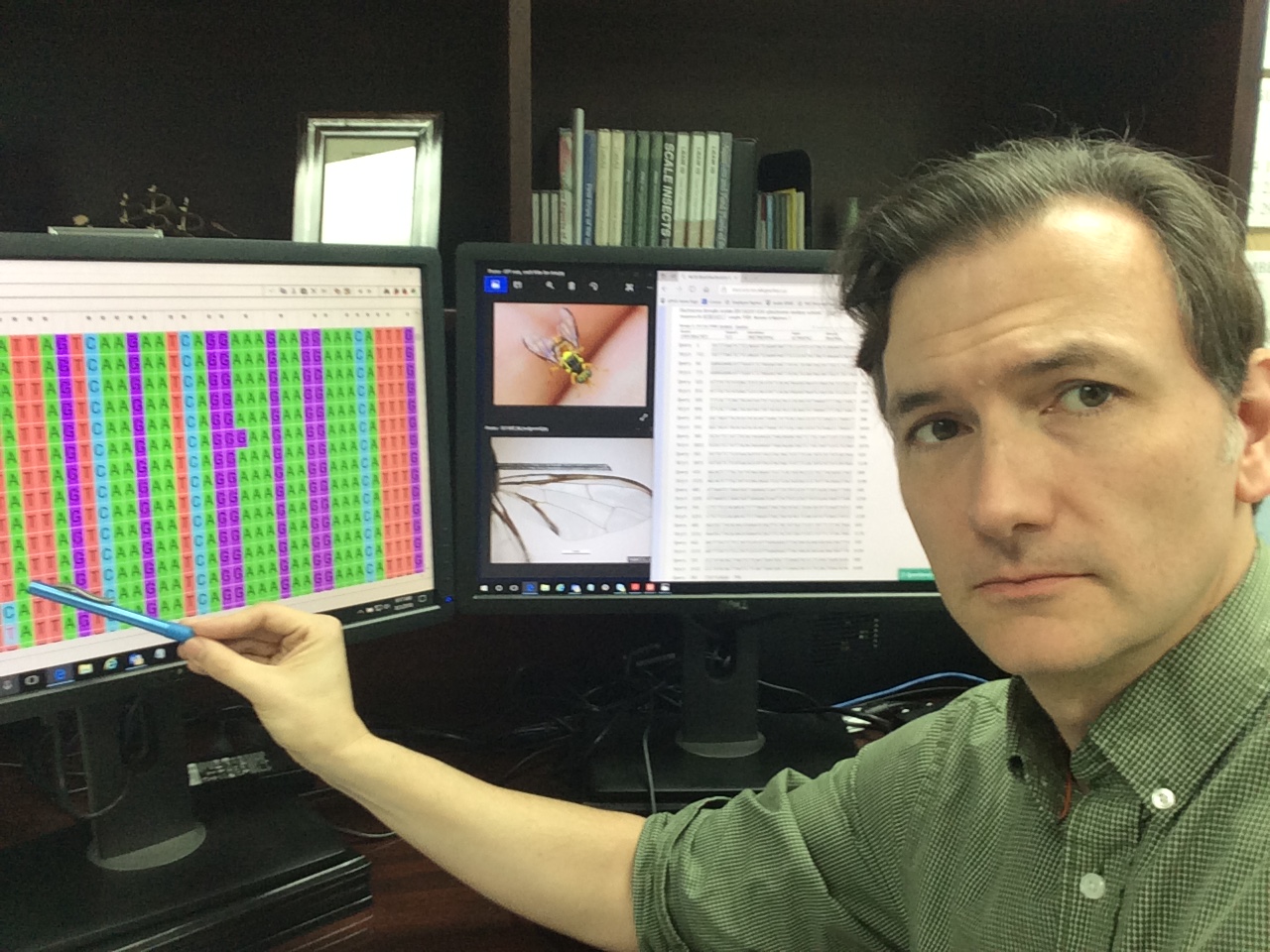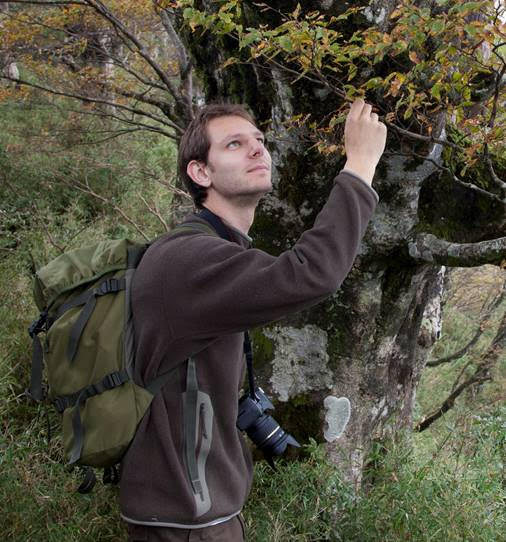


Dr. Gary Steck is a taxonomic entomologist with the Florida Department of Agriculture and Consumer Services and curator of Diptera at the Florida State Collection of Arthropods. His interests in life histories of tephritid flies led him to study of the immature stages. He has authored or co-authored 25 publications dealing specifically with the morphological, biochemical, and/or molecular identification of immature stages of pest flies (e.g., Anastrepha, Bactrocera, Ceratitis, Rhagoletis, bamboo-infesting flies, corn silk flies) and non-economic, non-fruit infesting tephritids. On-going efforts include development of research collections and morphological identification tools for immature stages of tephritids of economic importance globally. Since 2009, he has collaborated with an IAEA-sponsored international team of researchers addressing integrative taxonomy of cryptic species complexes among the Tephritidae.
Dr. Luc Leblanc
Dr. Leblanc has over 30 years of experience in the fields of insect taxonomy research, managing insect collections, and implementing plant protection-related projects in Africa and the South Pacific Islands. After working for many years in the Canadian National Collection of Insects and completing an MSc degree on Hymenoptera taxonomy, he left his country to undergo an adventurous and fulfilling international career, residing in Africa (Guinea and Rwanda, 1989-1994) and the Pacific Islands (Micronesia, Papua New Guinea, Fiji Islands, 1994-2002). It is in the Pacific that he became a fruit fly entomologist, employed under the Regional Fruit Fly Project in the Pacific. Subsequently (2003-2015) he was based at the University of Hawaii, working under the Area-Wide Fruit Fly IPM program in Hawaii, completing a PhD dissertation on non-target attraction to fruit fly lures, and further developing his expertise in dacine fruit fly taxonomy and identification. Currently, he is the curator of the William F. Barr Entomological Museum, at the University of Idaho, still involved in fruit fly-related research and teaching the University’s Insect Taxonomy and Identification course.

Allen Norrbom is an internationally recognized expert in the taxonomy of fruit flies and other Diptera families, with 34 years as a research entomologist at the USDA Systematic Entomology Laboratory and responsibility for curating the Tephritoidea collection at the National Museum of Natural History, Washington, DC. His primary research focus is fruit flies of the Americas with special emphasis on Anastrepha. He has published over 130 scientific papers on Tephritidae and other flies including 38 that address Anastrepha specifically.

Dr. Barr has been working in the fields of fruit fly molecular diagnostics and genetics since 1998. He has co-authored 46 peer-reviewed papers and book chapters, including studies on the development and implementation of methods for the identification of major plant pests of the genera Anastrepha, Bactrocera, and Ceratitis. Dr. Barr has served on various international committees that evaluate DNA barcoding technology and identification of fruit flies in the family Tephritidae. Since 2012, Dr. Barr has served as a discipline lead for FAO/International Plant Protection Convention’s (IPPC) Technical Panel for Diagnostic Protocols to support adoption of internationally harmonized protocols for global insect pests. He is interested in how molecular identification methods can be applied to help limit the spread of agricultural pests and invasive species.
Dr. Camiel Doorenweerd
Dr. Doorenweerd has over ten years of experience in insect taxonomy and the use of molecular methods for both describing new species and species identification. He has been studying the systematics of the ~1,000 species of Dacinae fruit flies (Bactrocera, Zeugodacus, Dacus) since 2017 and curates one of the major Dacinae fruit fly collections in the world, hosted in the University of Hawaii Insect Museum, which was previously curated by Dr. Luc Leblanc. Dr. Doorenweerd's current work focusses on the phylogenetic relationships between pest and non-pest species, and efficient and robust morphological and molecular methods to identify species.